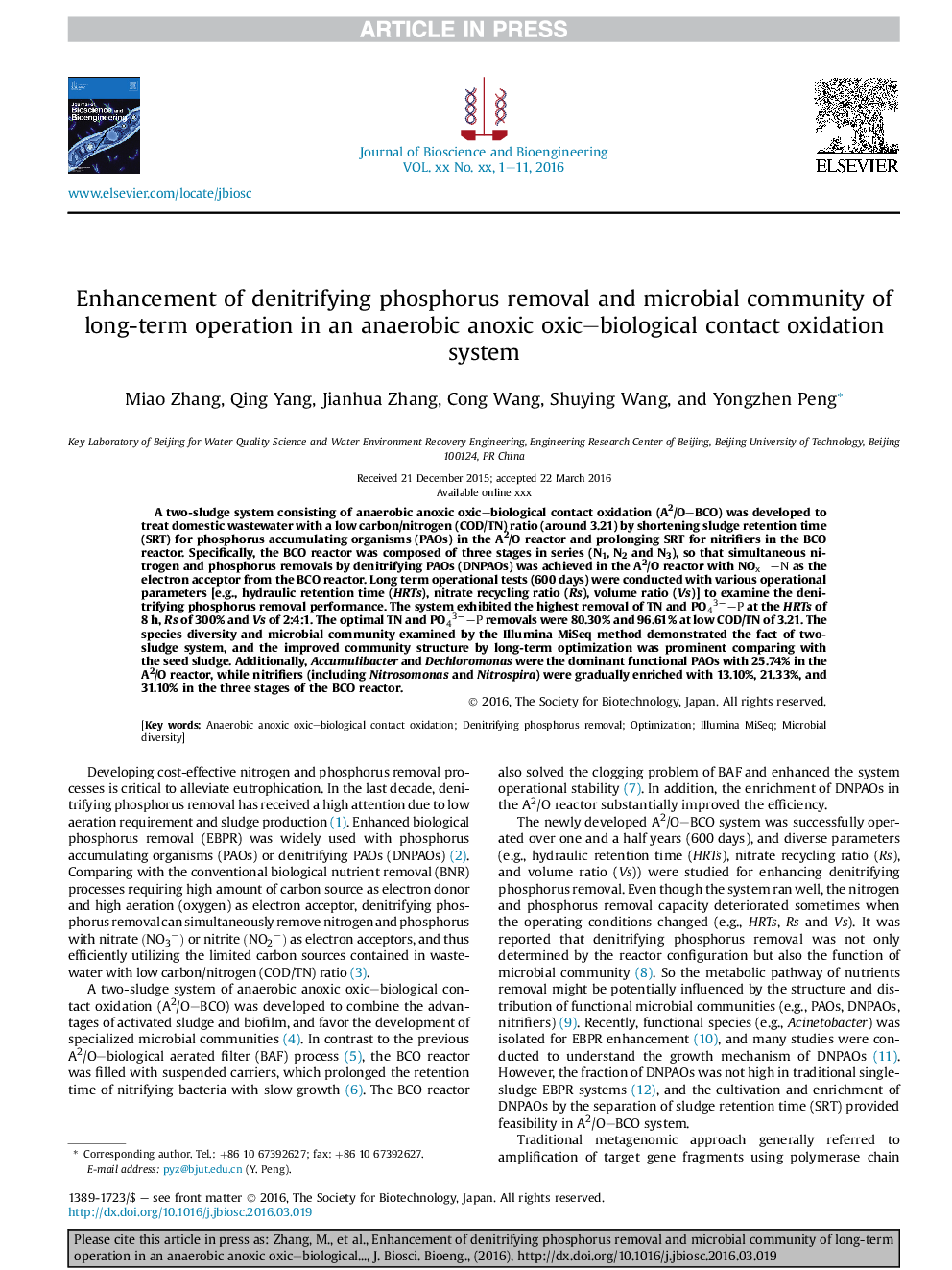| Article ID | Journal | Published Year | Pages | File Type |
|---|---|---|---|---|
| 4753351 | Journal of Bioscience and Bioengineering | 2016 | 11 Pages |
Abstract
A two-sludge system consisting of anaerobic anoxic oxic-biological contact oxidation (A2/O-BCO) was developed to treat domestic wastewater with a low carbon/nitrogen (COD/TN) ratio (around 3.21) by shortening sludge retention time (SRT) for phosphorus accumulating organisms (PAOs) in the A2/O reactor and prolonging SRT for nitrifiers in the BCO reactor. Specifically, the BCO reactor was composed of three stages in series (N1, N2 and N3), so that simultaneous nitrogen and phosphorus removals by denitrifying PAOs (DNPAOs) was achieved in the A2/O reactor with NOxâ-N as the electron acceptor from the BCO reactor. Long term operational tests (600 days) were conducted with various operational parameters [e.g., hydraulic retention time (HRTs), nitrate recycling ratio (Rs), volume ratio (Vs)] to examine the denitrifying phosphorus removal performance. The system exhibited the highest removal of TN and PO43â-P at the HRTs of 8Â h, Rs of 300% and Vs of 2:4:1. The optimal TN and PO43â-P removals were 80.30% and 96.61% at low COD/TN of 3.21. The species diversity and microbial community examined by the Illumina MiSeq method demonstrated the fact of two-sludge system, and the improved community structure by long-term optimization was prominent comparing with the seed sludge. Additionally, Accumulibacter and Dechloromonas were the dominant functional PAOs with 25.74% in the A2/O reactor, while nitrifiers (including Nitrosomonas and Nitrospira) were gradually enriched with 13.10%, 21.33%, and 31.10% in the three stages of the BCO reactor.
Related Topics
Physical Sciences and Engineering
Chemical Engineering
Bioengineering
Authors
Miao Zhang, Qing Yang, Jianhua Zhang, Cong Wang, Shuying Wang, Yongzhen Peng,
